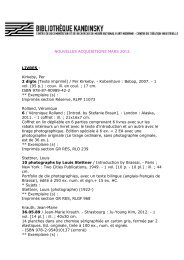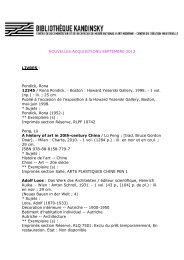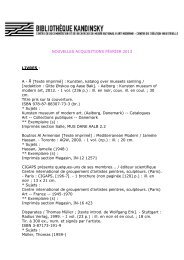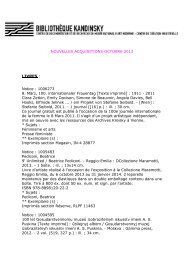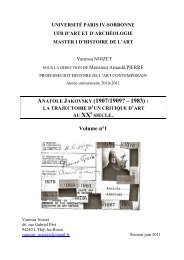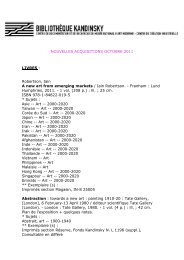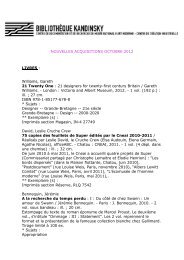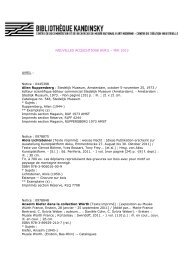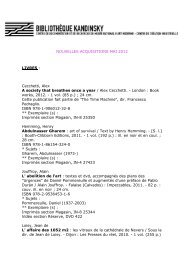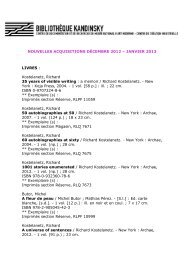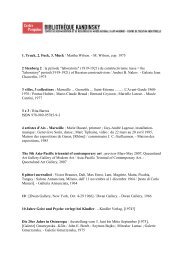anatole jakovsky (1907/1909 ? â 1983) - Bibliothèque Kandinsky
anatole jakovsky (1907/1909 ? â 1983) - Bibliothèque Kandinsky
anatole jakovsky (1907/1909 ? â 1983) - Bibliothèque Kandinsky
Create successful ePaper yourself
Turn your PDF publications into a flip-book with our unique Google optimized e-Paper software.
La trajectoire d’un critique d’art au XXe siècle.<br />
There are not many men like Brancusi, whose long life and long vision is<br />
unwaveringly devoted to the constant elevation of his art, to the uninterrupted and symbolic<br />
construction of the «Colonne sans fin», of which fortunately we shall not see the completion,<br />
either to-day or to-morrow. The task is doubly difficult for a sculptor ; for Brancusi, I must<br />
point out, has his roots in the century already forgotten, the century which was essentially<br />
anti-sculptural, extra-pictorial and illusionist, and of which the greatest sculptor, Rodin, did<br />
after all nothing but introduce the impressionist principle into sculpture, and thus fatally<br />
destroy it. Rodin’s touch, his little cells of shadow and light, disintegrate the volume, in the<br />
same way as spectral divisionism – the decomposition of the old “white” by painters of this<br />
school killed the modelling, exhausted the perspective and consequently destroyed the whole<br />
weight of the picture.<br />
Architecture even lost its solidity, and the stone dripped away drop by drop through<br />
the cut veins of these unusual «modern-style» buildings, scattered throughout Europe. At that<br />
time the eyes of the world announced themselves as Monet, Renoir, Manet.<br />
Their power lasted until Cubism. Until the new century’s first attack of conscience,<br />
which showed itself little by little in Montmartre.<br />
There, in a heavy atmosphere of expectancy, when paraodox was the only possible<br />
form of truth, and the only reasonable means of escaping from a thoroughly shaken reality,<br />
fantastic voyages and Gauguin’s flight to Tahiti presided over the discovery of negro art made<br />
by a new Bohemianism living in the immemorial tradition of artists maudits, persecuted in<br />
their turn by the persistent recurrence of the mal du siècle, which left nothing behind it but a<br />
ditch full of evasions, stupidities, neuroses, suicides. Lautréamont, Van Gogh, Gerard de<br />
Nerval, Baudelaire. How long it is, this furrow of despair ! So the new spirit revealed itself<br />
under the sign of artificial paradises and negro fetishes.<br />
Having succeeded in exhuming the beauties of former times – the arts and dead<br />
visions of all people and all ages, from the Pre-Raphaelites to the arts called prehistoric and<br />
savage – there is nothing to do but to draw up a balance sheet and make a clean sweep of all<br />
preceding cultures, and open the way to abstract art, which will not be slow in appearing.<br />
Cubism clearly traced the frontier between the two civilizations, between the millenary and<br />
the electro-metallurgic period which begins our days.<br />
But Cubism perished in the field. That is its merit. The ripening nineteenth century<br />
must no doubt have recognised in Brancusi its precursor, its first great authentic sculptor. He<br />
was born far from Paris on Roumanian soil, where the sun is never sombred by factory<br />
86



